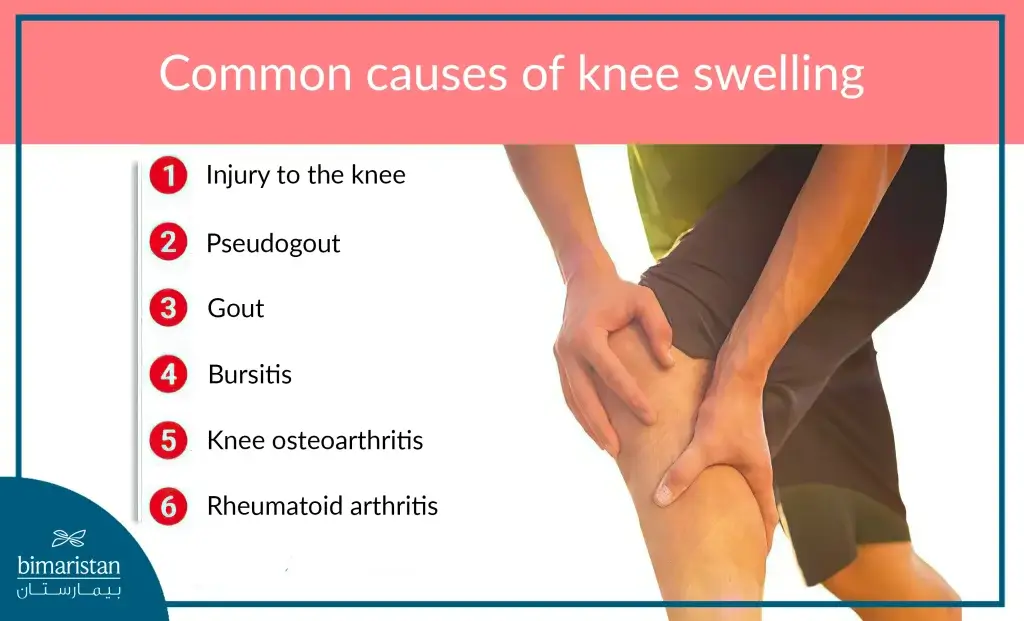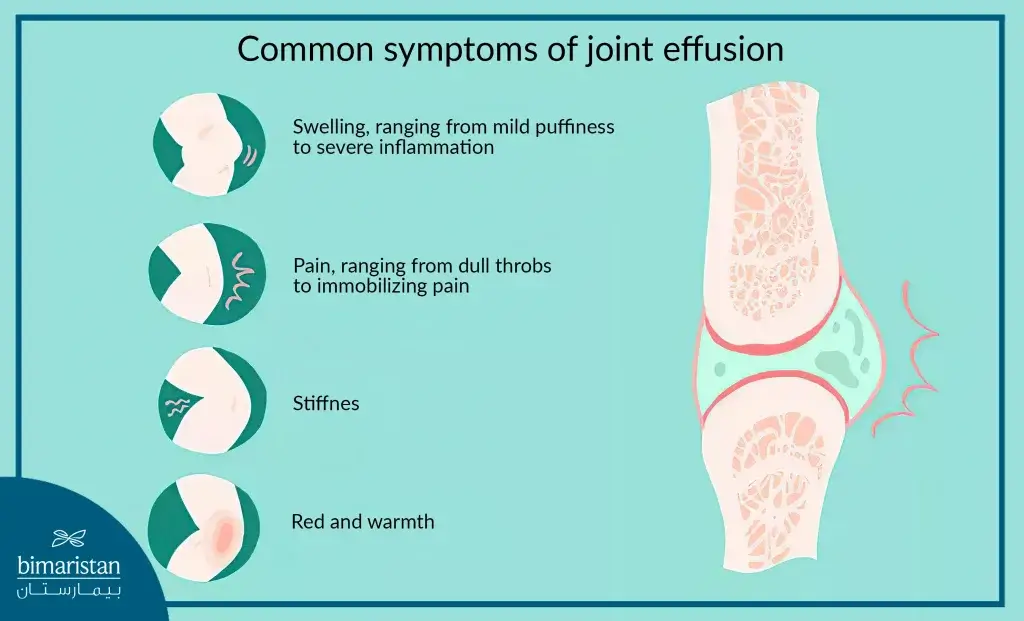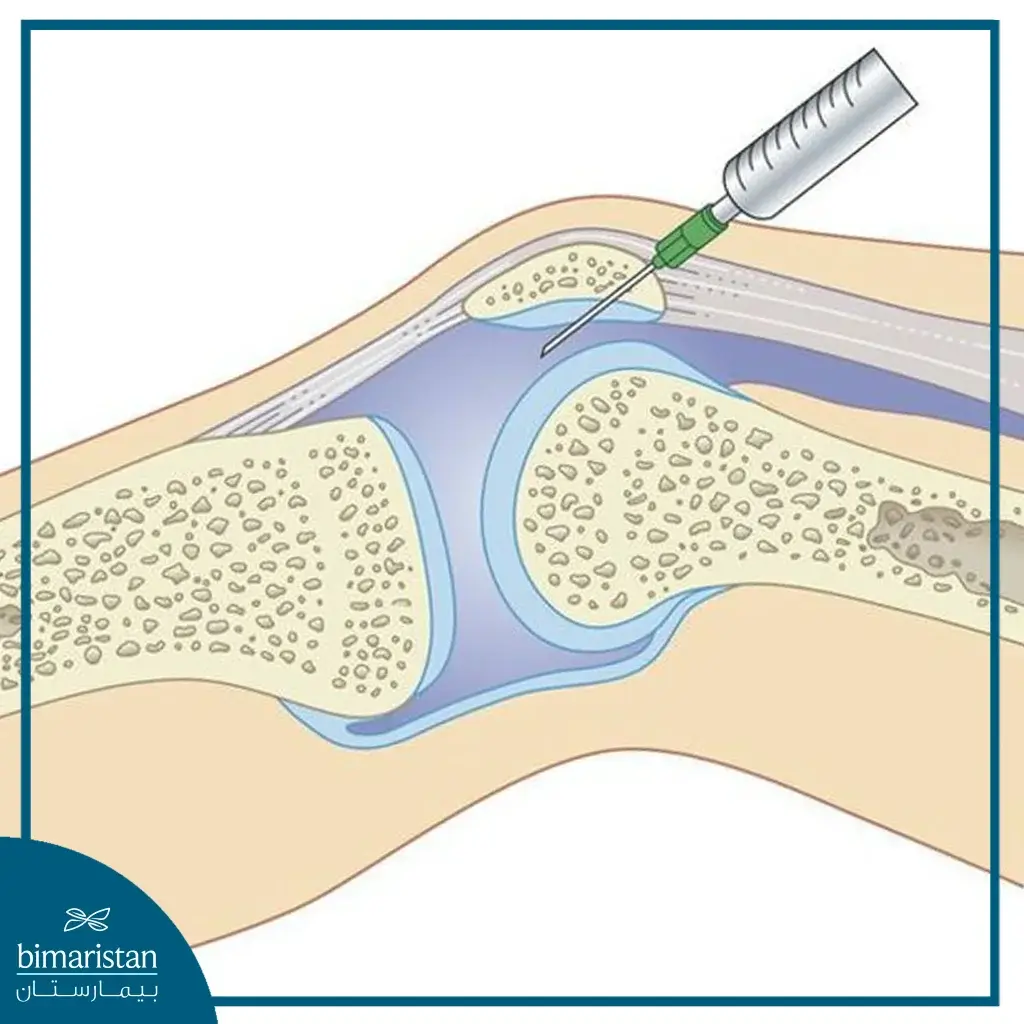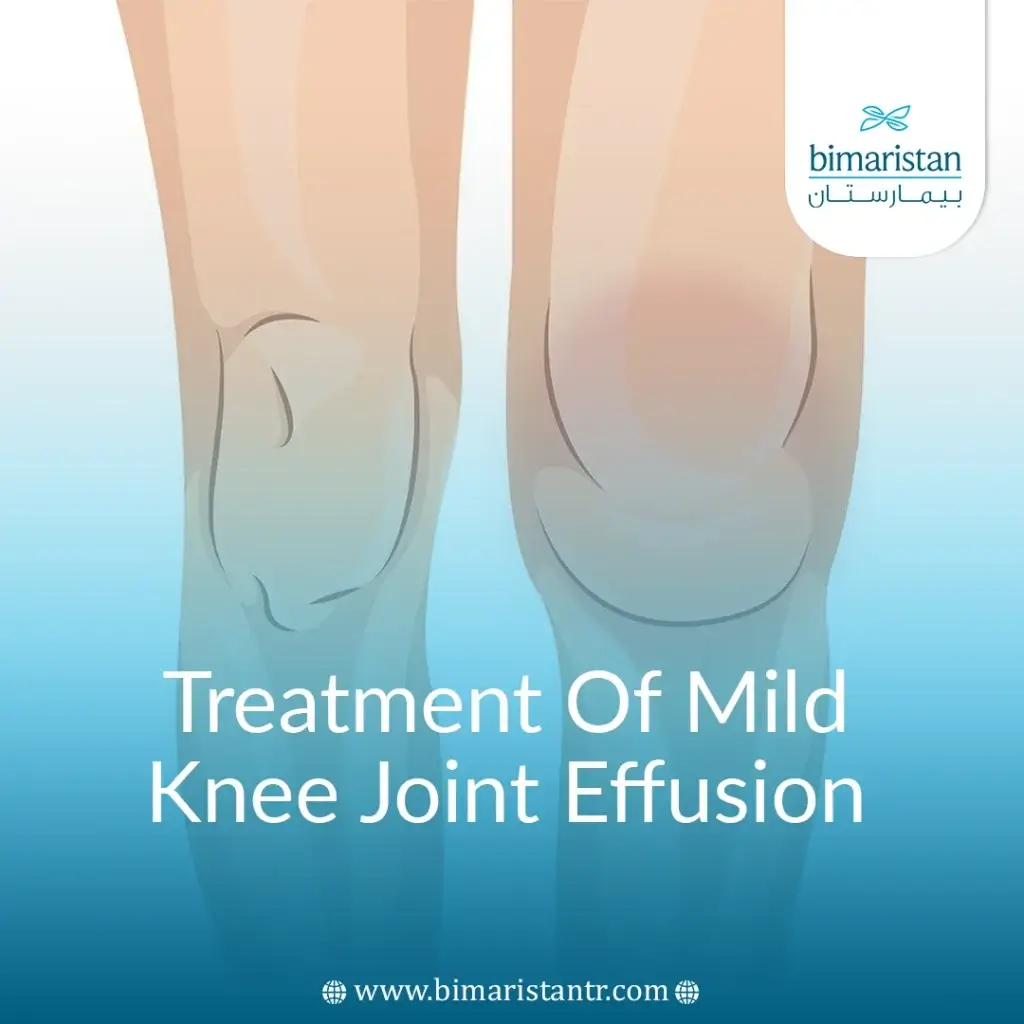The knee joint is one of the most injury-prone joints in the body. It contains many sacs filled with synovial fluid, and statistics indicate that 27% of people will experience knee joint effusion at some point. Therefore, they may require the treatment of mild knee joint effusion or other fluid accumulation conditions.
Knee effusions can occur at any age and can result from various causes. Understanding the reason behind these conditions is the cornerstone of proper diagnosis and treatment.
What is fluid accumulation in the knee (joint effusion)?
A noticeable increase in the amount of fluid in the knee joint capsule, which can be synovial fluid, blood, or pus, occurs due to an injury, trauma, or a certain medical condition, causing swelling and pain in the joint.
Meaning of mild knee joint effusion
It is a mild accumulation of fluids around or inside the knee joint caused by trauma or various medical conditions, which causes pain and discomfort.
Risks of knee joint effusion
Patients may experience an inability to walk normally and pain while walking, which may limit movement. The excess fluids can also cause pressure and irritation inside the joint, leading to discomfort during activities that exert pressure on the joint. If treatment of mild knee joint effusion is delayed, it can permanently restrict joint function and affect the bones under the cartilage.
Causes of fluid accumulation inside the knee joint
Many causes may lead to knee joint effusion, including:
- Injury or trauma to the knee
- Osteoarthritis
- Gout
- Injuries resulting from overuse and strain on the knee joint
- Rheumatoid arthritis
- Septic arthritis
- Obesity
- Infection

Symptoms of Fluid Accumulation in the Knee (Knee Joint Effusion)
In addition to joint swelling, knee joint effusion may be associated with the following:
- A feeling of warmth at the site of injury
- Redness
- Pain
- Difficulty walking
- A feeling of stiffness and resistance in the joint

Diagnosis of Mild Knee Joint Effusion
The diagnosis and the treatment of mild knee joint effusion require determining the main cause through clinical evaluation, which includes symptoms, clinical signs, and other specific tests for such conditions, radiological and imaging studies, and sometimes joint fluid analysis.
Special Tests for Diagnosing Mild Knee Joint Effusion
- Patellar Tap Test: The doctor presses the patella downwards, and if a slight tap is felt and the patella rebounds, this means the patella is floating on the joint effusion, confirming knee joint effusion, known as the “floating patella” sign.
- Balloon Test: This is done by pressing the suprapatellar pouch on the femur using the thumb and fingers, making the effusion more visible.
- Bulge Test: The effusion can be assessed by pushing all the fluid to the lateral side and pressing until a bulge forms on the medial side, indicating mild effusion.
Imaging and Radiological Studies
- X-rays: X-rays help detect the presence of bone fractures and can identify degenerative diseases associated with rheumatoid arthritis.
- Ultrasound: Helps differentiate between complex and simple effusions and can guide joint aspiration.
- CT Scan or MRI.
What is the Treatment for Knee Joint Effusion?
The treatment of knee joint effusion varies depending on the underlying cause. Treatment usually begins with pain management and addressing the cause of the effusion, which may involve infection treated with antibiotics after sampling the accumulated fluid. Aspiration and drainage of the fluid can also relieve pain. If the effusion is due to more serious injuries such as rheumatic diseases or joint rheumatism, consulting a doctor to investigate these conditions is necessary. Ligament injuries and fractures may also cause effusion, requiring consultation with an orthopedic doctor for appropriate treatment, including surgeries if necessary, such as ligament tears.

Treatment of Mild Knee Joint Effusion (Fluid Accumulation in the Knee)
The treatment of mild knee joint effusion depends on the cause of fluid accumulation. Therefore, many treatment options typically start with pain control and then treating the underlying cause of the effusion, including:
- Pain Control: Acute pain and swelling require specific treatments such as cold or ice packs, splints, and painkillers like NSAIDs. Fluid drainage can be effective in relieving pain if there is significant effusion causing pain. However, fluid samples should be taken and cultured before starting antibiotics if bacterial infection is suspected. Steroids should not be used in the joint until infection or other contraindications are ruled out.
- Treatment of Infectious Arthritis: Antibiotics should be started if bacterial infection is suspected after the accumulated fluid sample is sent for analysis. The most common bacterial agents causing infectious arthritis include Staphylococcus (40%), Streptococcus (28%), gram-negative bacilli (19%), Mycobacterium (8%), gram-negative cocci (3%), gram-positive bacilli (1%), and anaerobes (1%). Joint aspiration is associated with rapid recovery and decreased morbidity, and arthroscopy helps visualize the joint interior, break adhesions, drain pus, and debride dead tissue.
- Treatment of Ligament Injuries: Using a brace for the injured knee as initial treatment and consulting an orthopedic surgeon for appropriate treatment. Complete ligament tears and knee instability may require surgical intervention.
- Management of Fractures and Rheumatic Diseases that may cause effusion.
Cost of the Treatment of Mild Knee Joint Effusion in Turkey
The cost of the treatment of mild knee joint effusion varies relatively due to the different underlying causes. However, it generally ranges from $800 to $1,000, which is quite reasonable considering the service and treatment provided by the best doctors and medical centers in Turkey, compared to the high costs in foreign countries such as European countries.
Knee joint effusion is a condition that overlaps with many other causes and medical conditions, making accurate diagnosis and precise knowledge of the disease or condition causing the effusion the cornerstone in providing appropriate and effective treatment, which often begins with rest and elevating the limb in some cases of the treatment of mild knee joint effusion. In more serious cases, NSAIDs may be required, leading to fluid aspiration or surgery if necessary. Consequently, controlling the effusion and treating it ideally leads to the condition regressing and complete recovery within short periods, allowing for a gradual return to normal daily activities.
Resources:



